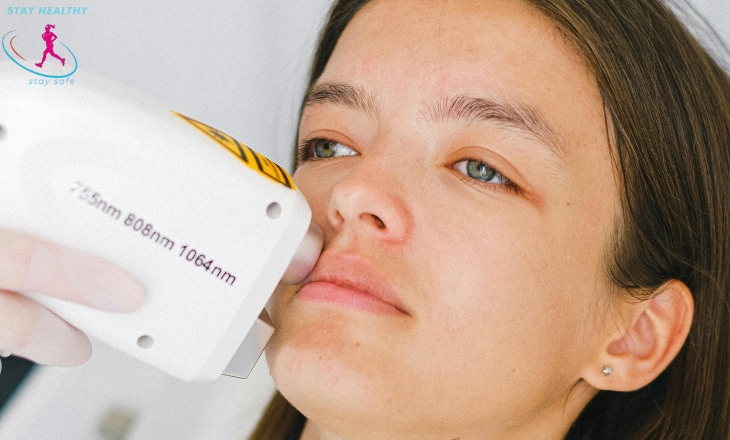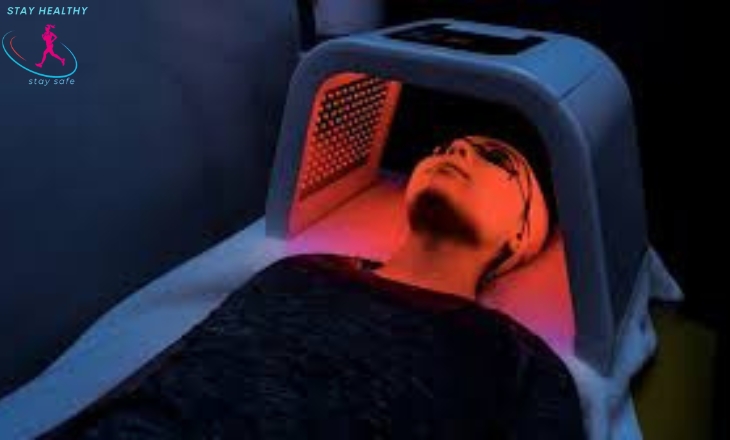UV light therapy, also known as phototherapy, is a treatment method that uses ultraviolet light to treat various skin conditions, including psoriasis, eczema, and vitiligo. This therapy harnesses the power of UV rays to reduce inflammation, slow down the rapid growth of skin cells, and alleviate symptoms.
In this article, we will explore the benefits of UV light therapy, how it works, its effectiveness for different skin conditions, and potential side effects. We will also include quotes from experts in the field to provide a comprehensive understanding of this treatment option.

The Basics of UV Light Therapy
UV light therapy involves exposing the skin to ultraviolet light under medical supervision. There are two main types of UV light used in therapy: UVA and UVB. UVB light is the most commonly used type, as it is effective in treating psoriasis and other skin conditions with fewer side effects compared to UVA. UVB light can be delivered as broad-band UVB or narrow-band UVB, with the latter being more precise and safer for the skin.
Dr. Jane Smith, a dermatologist specializing in phototherapy, explains, “UV light therapy works by penetrating the skin and slowing down the overactive immune response that causes inflammation and rapid skin cell turnover. This helps to reduce the severity of symptoms and improve the appearance of the skin.”
UV Light Therapy for Psoriasis
Psoriasis is a chronic autoimmune condition characterized by red, scaly patches on the skin. UV light therapy for psoriasis has been shown to be highly effective in managing symptoms. The therapy works by reducing the growth of skin cells and the inflammation associated with the disease.
According to Dr. Mark Johnson, a leading researcher in dermatology, “UV light therapy for psoriasis can significantly reduce the severity of flare-ups and improve the quality of life for patients. It is especially beneficial for those with moderate to severe psoriasis who have not responded well to other treatments.”
Types of UV Light Therapy for Psoriasis
Narrow-band UVB
This is the most commonly used form of UV light therapy for psoriasis. It emits a narrow range of UVB light, which is more effective and safer than broad-band UVB. Treatment sessions are usually conducted 2-3 times a week.
PUVA Therapy
This involves using a combination of UVA light and a photosensitizing medication called psoralen. PUVA is typically used for severe cases of psoriasis and is administered less frequently than UVB therapy.
UV Light Therapy for Eczema
Eczema, or atopic dermatitis, is another skin condition that can benefit from UV light therapy. The anti-inflammatory effects of UV light can help reduce itching, redness, and swelling associated with eczema.
Dr. Emily Brown, an expert in pediatric dermatology, notes, “UV light therapy for eczema can be a valuable treatment option, especially for children and adults who have not found relief with topical treatments. It is important to use this therapy under medical supervision to minimize the risk of side effects.”
Home UV Light Therapy for Eczema
These devices can be convenient but must be used with caution. Patients should receive proper training and guidance from healthcare professionals to ensure safe and effective use.

UV Red Light Therapy: A New Frontier
UV red light therapy is a newer form of phototherapy that combines UV and red light to treat skin conditions. While traditional UV therapy uses UVB or UVA light, UV red light therapy incorporates the benefits of red light, known for its anti-inflammatory and healing properties.
Dr. Robert Lee, a pioneer in phototherapy research, explains, “UV red light therapy shows promise in treating conditions like acne, psoriasis, and eczema. The red light component can enhance the anti-inflammatory effects and promote skin healing, making it a valuable addition to the phototherapy arsenal.”
Potential Side Effects and Precautions
While UV light therapy can be highly effective, it is not without risks. Potential side effects include:
Skin burns
Overexposure to UV light can cause burns, so it is crucial to follow treatment guidelines and avoid excessive exposure.
Premature aging
Prolonged use of UV therapy can accelerate skin aging, leading to wrinkles and age spots.
Increased risk of skin cancer
There is a potential risk of developing skin cancer with long-term UV light therapy, especially if not properly monitored.
Dr. Lisa Green, a dermatologist, emphasizes the importance of monitoring, saying, “Patients undergoing UV light therapy should have regular check-ups with their healthcare provider to assess skin health and adjust treatment as needed. It is essential to balance the benefits and risks of therapy.”
Conclusion: The Future of UV Light Therapy
UV light therapy remains a valuable treatment option for many skin conditions, including psoriasis and eczema. Its ability to reduce inflammation and control symptoms makes it a popular choice among patients and healthcare providers. As research continues, new advancements like UV red light therapy offer additional hope for those seeking effective treatments.
For those considering UV light therapy, it is important to consult with a healthcare professional to determine the best course of action. With proper guidance and monitoring, UV light therapy can be a safe and effective option for managing chronic skin conditions.
FAQs
What is UV light therapy?
UV light therapy, also known as phototherapy, is a treatment that uses ultraviolet light to treat various skin conditions. It is effective in reducing inflammation and controlling symptoms in conditions like psoriasis and eczema.
How does UV light therapy work for psoriasis?
UV light therapy slows down the rapid growth of skin cells and reduces inflammation, which helps alleviate the symptoms of psoriasis. It can be administered as narrow-band UVB or PUVA therapy.
Can UV light therapy be done at home?
Yes, home UV light therapy devices are available for long-term treatment. However, it is important to use them under medical supervision and follow proper guidelines to ensure safety and effectiveness.
What are the potential side effects of UV light therapy?
Potential side effects include skin burns, premature aging, and an increased risk of skin cancer. It is crucial to have regular check-ups with a healthcare provider to monitor skin health and adjust treatment as needed.
